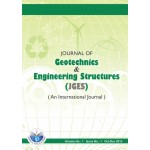Imperial Journal of Modern Technology in Civil Engineering (Formerly Journal of Geotechnics and Engineering Structures (JGES))
Frequency :Quarterly
ISSN :2454-6909
Published By :Imperial Publications

Frequency :Quarterly
ISSN :2454-6909
Published By :Imperial Publications
Laterite blocks are widely used for load bearing masonry. Laterite blocks are usually found in heavy rain fall areas all over the world. The characteristics of laterite blocks vary from place to place. There is a wide variation in the property and appearance of laterite blocks. They are used in natural form without any manufacturing process. Several investigators have evaluated the characteristics of laterite blocks and laterite blocks masonry .However the information available on the characteristics of locally available laterite blocks of are scanty. As such a detailed experimental investigation has been made to know the characteristics of laterite blocks masonry constructed using locally available laterite blocks and cement mortars. Three different proportions of cement mortars have been tried. The water transport phenomenon, masonry compressive strength and shear bond strength has been obtained for each case. Compressive strength has been obtained through stack bonded masonry prisms of five block height, whereas the shear bond has been determined through masonry triplets.
From water transport studies it has been found that laterite blocks requires at least 20 to 25 minutes immersion in water at the time of construction. The compressive and shear bond strength varies from 0.29 MPa to 0.83MPa